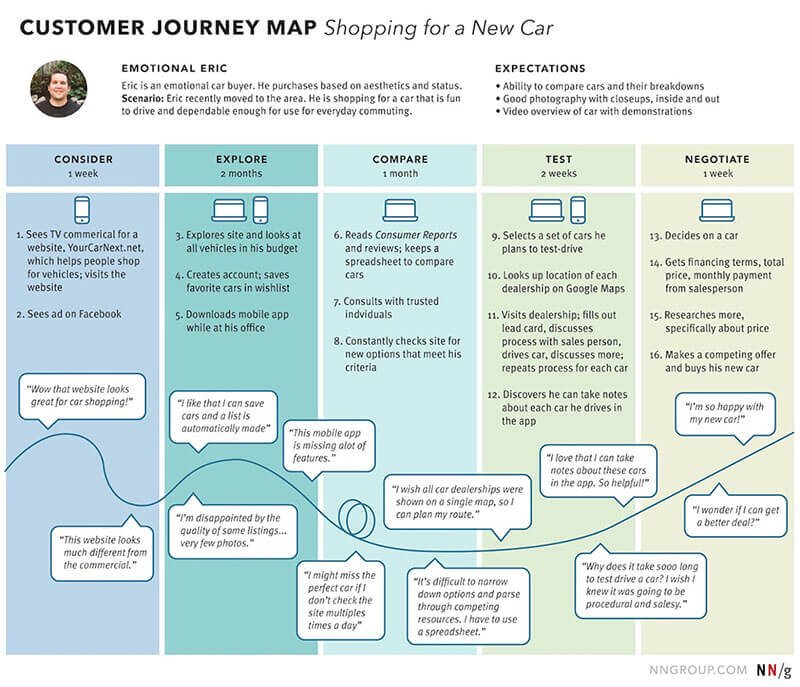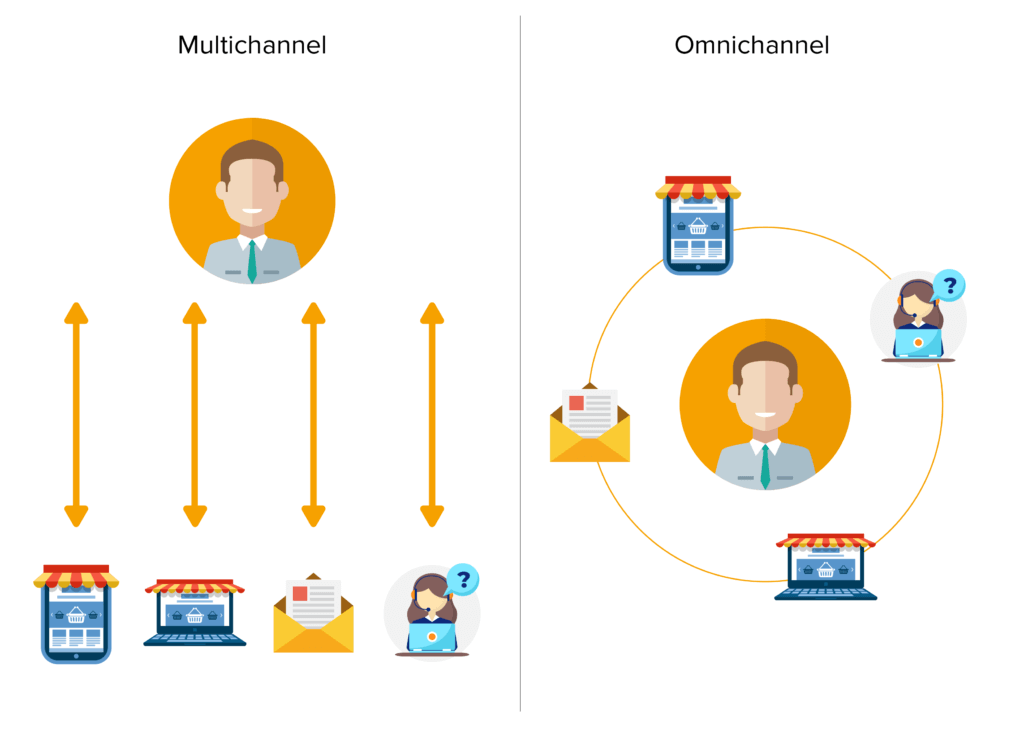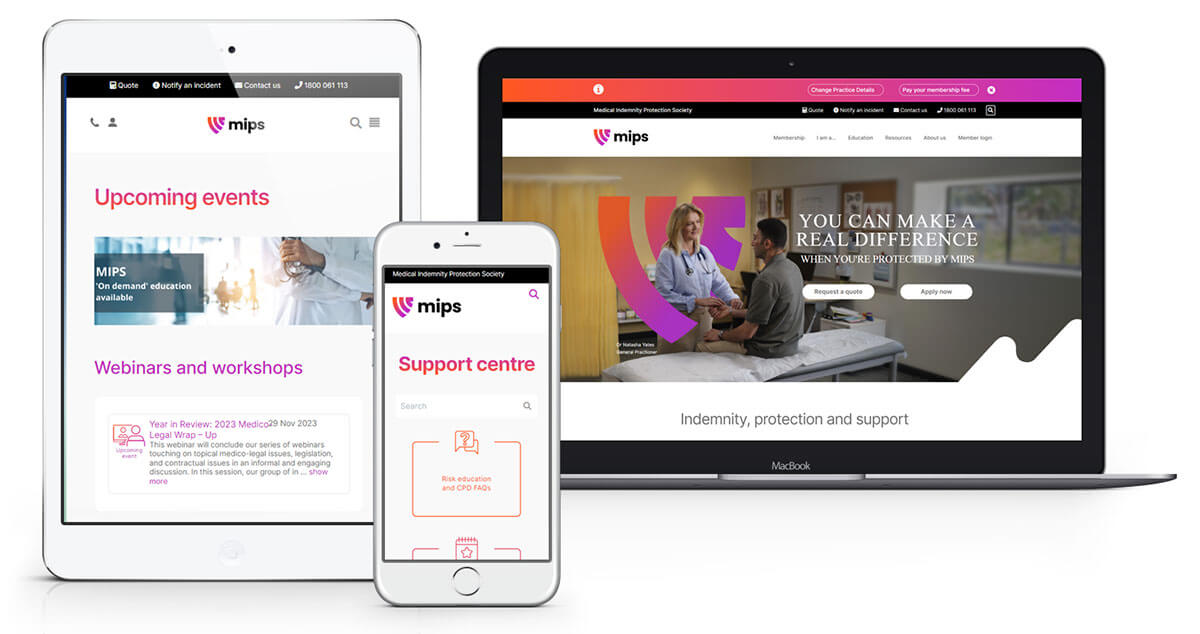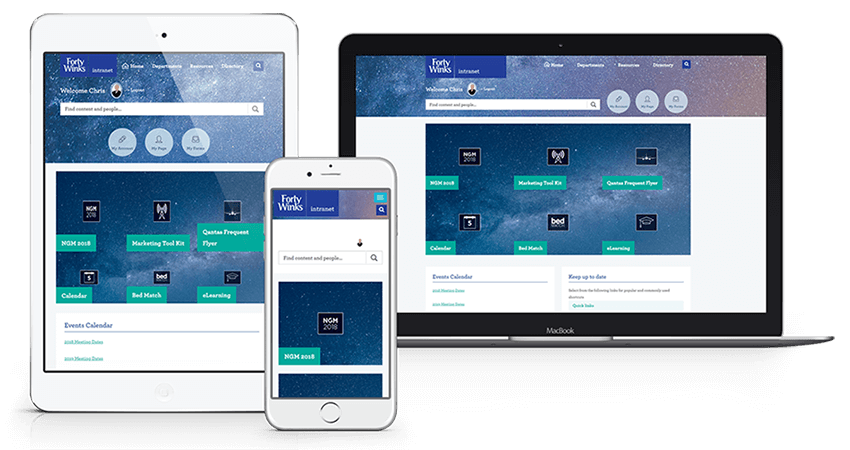Your organisation might be well overdue for a website update, but before you even start to think about this it’s important to take a step back and consider the bigger picture of how your customers engage with your brand. In 2024 and beyond your digital customer experience now extends further than a few web pages; it’s likely a far more complex and varied journey than it’s ever been before.
Here, we explore the essentials of great customer experiences, as well as the key trends to consider well before diving into enterprise website development.
Understanding Your Customer Experience
Your digital customer experience (DCX) must not be developed in a vacuum, because it forms a critical part of your overall customer experience (CX) management. And the first step to ensuring a great customer experience in any environment is understanding who your customers are, and how, when and where they interact with your brand. Here’s where to get started:
Defining Your Audience Personas
Not only should this step include the demographics of your customers such as location, age and income level, but also psychographics such as their values, habits, motivations and preferences.
Mapping out Customer Journeys
Clearly map out the customer journey for each of your customer personas in as much detail as you can based on the data you have. Include pain points, key concerns and questions customers might have at each stage of their journey, and of course each channel that they interact with. Here are some great templates to help you get started.
Identifying Gaps in the Experience
There may well be common issues with your current customer experience that you need to address. Do customers find it hard to get in touch with you? Are they leaving at a critical point in the buying process? Or could they make a cup of tea in the time it takes to load your site?

A customer journey example from NN/G
Once you have these elements outlined, it’s time to consider how the following trends might shape your new digital customer experience.
Digital Customer Experience Trends for 2024 and Beyond
Far from being fads, these trends present key opportunities for you to provide truly useful, engaging and effective customer experiences moving forward.
1. Multi-touchpoint Customer Journeys
Customer experience has a significant impact on business. The changing patterns of consumption in the digital age, has meant that the ‘typical’ digital customer experience could potentially now include a combination of mobile and desktop-based website visits, a log-in customer portal, email, SMS, social media and even voice-based interactions.
Where the multi-channel strategy used to be focused on strong customer experiences in each individual channel, an omni-channel strategy is now about delivering a consistent, integrated experience across all of these channels. This means customers can find the information and answers they need easily, without ever needing to explain their situation twice.

Graphic from appinventiv
2. Using a DXP to Manage Customer Experiences
With this shift towards more integrated interactions, it makes sense that more businesses are looking to use a Digital Experience Platforms (DXP) such as Elcom to manage their digital customer experience.
According to Gartner, a DXP is a collection of different technologies that work together to help organisations deliver consistent, reliable, and cohesive digital experience to their users at scale.
This type of platform can ensure a cohesive experience across multiple touchpoints in the customer journey, covering aspects such as content, communications and marketing, analytics and customer service. For example, on the one platform you can build a staff intranet, customer/member portal, supplier portal, customer training platform and customer websites.
Integration can further unify the experience for both customers and employees, for example by linking Salesforce or another CRM to the system.
A DXP makes sense in 2024 and beyond, because you can maintain one central source of information and use the system to personalise each customer experience across a range of channels such as your website, mobile experience and customer portal.
3. Providing Ultra-Personalised Experiences
Part of any good enterprise web design strategy is persoanlisation. In fact, 84% of consumers will spend more with brands that provide personalised customer service, according to Gladly's Customer Expectations Report. And the cost of not personalising your digital customer experience? Gallup research shows that brands risk losing 38% of customers as a result of poor personalisation efforts.
An effectively personalised experience might include:
- Segmenting prospects or customers based on their previous purchases or activity.
- Using segmented customer groups for relevant notifications and email marketing.
- Basing communications and content on whether the customer found you through social media or a specific search engine result.
- Providing personalised menus and information in a customer portal.
- Creating an online survey – even if short – to identify customer intentions or preferences.
- Using AI and chatbots for responsive, tailored customer service.
Medical Indemnity Protection Society Ltd (MIPS) is the informed choice for indemnity insurance for doctors, dentists and oral health professionals. Superior legal defence and 24-hour support and advice.

The MIPS website services a 40,000 strong membership, allowing members to access information, manage membership, conduct online training, download membership documents and update their details.
Working together with the Elcom team, new features were added including the implementation of automated email, SMS alerts and risk education dashboard. Elcom's Training Manager provided an effective platform to deliver MIPS’ initial business needs and a path forward for enhanced development.
4. Improving Employee Experience (EX) to Improve Customer Experience (CX)
It might seem odd to concentrate on employee experience while aiming to improve customer experience, but it turns out that the two really do go hand in hand. Gallup research consistently shows that the companies with the most engaged employees enjoy higher customer engagement, as well as other benefits such as improved productivity, profitability, employee retention and even workplace safety.
By empowering your employees with an effective digital workplace and efficient online training, they’ll have everything they need (including the motivation) to provide outstanding customer service. For this reason, developing your intranet, website and portal at the same time and choosing to use the same enterprise CMS can provide incredible returns on investment.
5. Staff Training Moving to Online Training
Further to the previous point, with several organisations shifting to a remote or hybrid working arrangement, in-person training and onboarding is no longer the best option. More organisations are using learning management systems and training portals to streamline training and development and make it accessible from any location and at any time.
Moving learning online also comes with additional benefits. Users can easily choose from optional modules, enrol in different units and courses using CPD points, check their progress, view their calendar, print certifications and more - all from a user-friendly interface. Trainers can test how well people have learned the material and the impact training programs are having, with surveys and quizzes you can choose to include at specific points throughout the training plan. And of course, administrators have the flexibility to report on pathways, individual and team results, as well as attendance levels to monitor progress and success.
Classroom style sessions can be delivered virtually to cater for a more interactive Q&A style of learning, with the on-demand version available online for staff to reference later on. This can be placed in a contextually relevant section on the portal, with links to relevant resources and a social Q&A style area. These portals can become a central hub for all staff training and development documentation.

Forty Winks’ enterprise intranet solution now supports a great customer experience, complete with eLearning module.
6. Prioritising Data Protection, Transparency and Trust
It’s easy to see we’re all becoming increasingly aware of data collection and security. Data privacy is a major concern for 70% of Australians, and nearly 9 in 10 want more choice and control over their personal information. And in a global 2019 Cisco survey, 43% of respondents felt they were unable to effectively protect their personal data, with 73% of those saying that was because it was too hard to figure out what companies were doing with their data.
Whether you have only a website or also a detailed customer portal, your data practices and privacy (as well as the transparency around these) should be foremost in your mind as you plan for future customer experiences:
- Working with a reputable development team is essential
- When developing your corporate or enterprise website or portal, it must comply with privacy laws that apply for your customers’ location such as including a banner or pop up on your website asking visitors to accept cookies that are used to track user information. This might include GDPR, or the Australian Privacy Act 1988.
- In 2024 and beyond, your privacy policy should be regularly reviewed and clearly presented.
- Two factor-authentication with sites that requires users to sign in.
- Password protection mechanisms such as preventing users from using their first name or last name, common password phrases and reusing old passwords.
7. Optimising Speed and Performance
It almost goes without saying, but performance and speed is still incredibly important to your digital customer experiences. Design should be clean, uncluttered, and provide a clear hierarchy in information. Your web and portal experience should also be fast and responsive for customers, and this applies both to the website speed as well as the speed of customer service. Little wonder that many businesses are now utilising AI chatbots and social messaging as key aspects of their experience.
The expectations for a great digital customer experience have never been so demanding. 67% of customers say their standards for good experiences are higher than ever.
And 76% of customers say it’s easier than ever to switch to another brand that will meet their expectations. So getting rave reviews must become a priority.
It’s time to ace your DCX, or get left behind.
How do you measure up when it comes to customer experience? Whether you’re intending to create a polished retail experience or an effective parents’ portal for your school website, working with the right provider is going to be key. Our team at Elcom is always happy to provide a free consultation to help you get started.